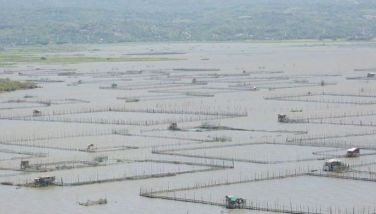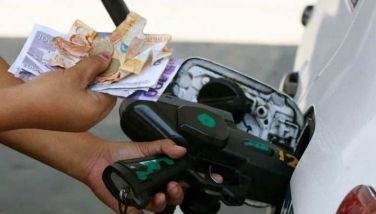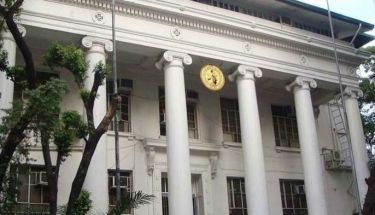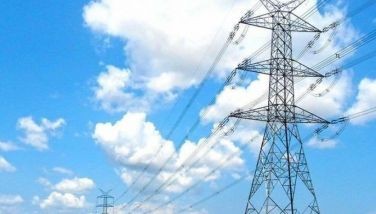Duterte declares state of calamity in Boracay
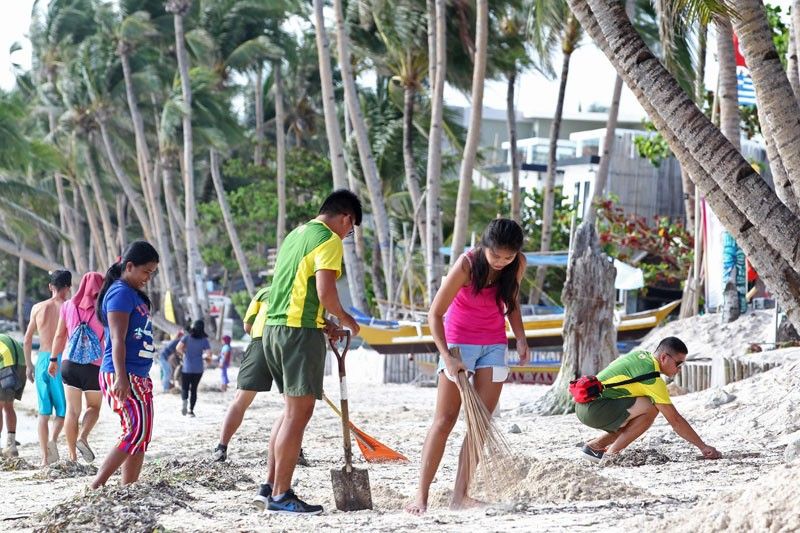
No TRO, but SC orders Palace to answer petition vs closure
MANILA, Philippines — Citing “human-induced hazards” on the island, President Duterte yesterday placed Boracay under a state of calamity for six months to implement rehabilitation work and to prevent the degradation of the tourist destination.
The order, which would speed up the release of funds for the rehabilitation projects, was contained in Proclamation No. 475. Projects can also be implemented without public bidding.
The four-page proclamation was released on the first day of the island’s shutdown yesterday.
The Supreme Court (SC) did not issue a restraining order to stop the shutdown, but it ordered Malacañang yesterday to answer a petition challenging the closure.
Duterte said the continuous rise of tourist arrivals, insufficient sewer and waste management system, and environmental violations of establishments aggravate the environmental degradation and destroy the ecological balance of Boracay.
These conditions have resulted in “major damage to property and natural resources” and the disruption of the normal way of life of residents, he added.
“It is necessary to implement urgent measures to address the above mentioned human-induced hazards, to protect and promote the health and well-being of its residents, workers and tourists, and to rehabilitate the island in order to ensure the sustainability of the area and prevent further degradation of its rich ecosystem,” Duterte said in the proclamation.
The Supreme Court (SC) has ordered Malacañang to answer a petition seeking to stop the six-month closure of Boracay Island, which started yesterday.
The island, which attracts about two million tourists every year, would be closed to non-residents until Oct. 25, 2018. The state of calamity, however, may be extended beyond six months.
The six-month closure could cost the economy some P1.9 billion and affect 35,000 workers, according to officials.
The government is planning to spend P2 billion to assist the displaced workers.
The state of calamity covers the three barangays of Boracay: Balabag, Manoc-Manoc and Yapak.
State agencies were instructed to undertake remedial measures like control of the prices of goods and commodities for the affected areas and tapping of negotiated procurement for relief and rehabilitation of affected areas.
The police, Coast Guard and other law enforcement agencies were also ordered to “act with restraint” while strictly implementing the closure.
The local government of Malay, Aklan, where Boracay is located, has been directed to ensure that no tourist would be allowed entry.
Last February, Duterte compared Boracay to a “cesspool” because of the lack of proper sewerage system in the island. He has also threatened to file charges against local officials who failed to address environmental issues there.
In special session yesterday, the SC justices required the executive branch to file its comment to the petition filed by three residents of the world-renowned tourist destination.
The petitioners sought a temporary restraining order (TRO) or status quo ante order against the implementation of the Boracay closure.
The respondents – Executive Secretary Salvador Medialdea and DILG officer-in-charge Eduardo Año – were given 10 days from receipt of notice to comply with the order.
An insider said the magistrates tackled the case but have not decided on the plea for a TRO filed by petitioners Mark Anthony Zabal, Thiting Estoso Jacosalem and Odeon Bandiola.
The source, who requested anonymity, said the SC opted to first hear the answer of the respondents before deciding on the TRO petition, possibly in another special session next month.
The petitioners questioned the authority of the President to order the closure of the island to tourists and non-residents. They accused him of violating the people’s constitutional rights to travel and due process.
They alleged that the order violated the separation of powers as provided under the 1987 Constitution.
They said the executive branch has no authority to order the closure of the island based on its supposed police power.
Petitioners argued that President Duterte overstepped the power of Congress in issuing the assailed order.
Malacañang expressed confidence that the court would uphold the legality of the closure of Boracay.
“An earlier Supreme Court ruling had already recognized that bulk of Boracay belongs to the state. And an indispensable element of a petition of injunction or a prayer for (a TRO) is there must be irreparable injuries,” presidential spokesman Harry Roque said.
Labor groups expressed dismay over the government’s failure to provide livelihood to thousands of workers displaced by the Boracay closure.
The closure left over 37,000 people jobless, according to Joshua Mata, secretary-general of the Sentro ng Nagkakaisang Progresibong Manggawa (SENTRO).
He said the drastic manner of the island’s closure affected not only the livelihood of 36,000 formal workers, but all other workers providing ancillary services such as travel agents and their families.
Clean-up begins
Volunteers combed near-empty beaches and workers boarded up shops on the island of Boracay on Thursday, as the Philippines’ top tourist hotspot closed for a six-month makeover aimed at rescuing it from ruin.
For the first time in years, Boracay’s most famous beach was almost deserted. Gone were the lines of umbrellas and sun loungers, as well as hordes of tourists and vendors, that characterized the explosive, unchecked growth of what was once a quiet paradise island.
Boracay was officially closed to visitors as of midnight Wednesday to undergo rehabilitation ordered three weeks ago by President Duterte, angered by a video he had seen of black sewage pouring out to sea at a Boracay beach.
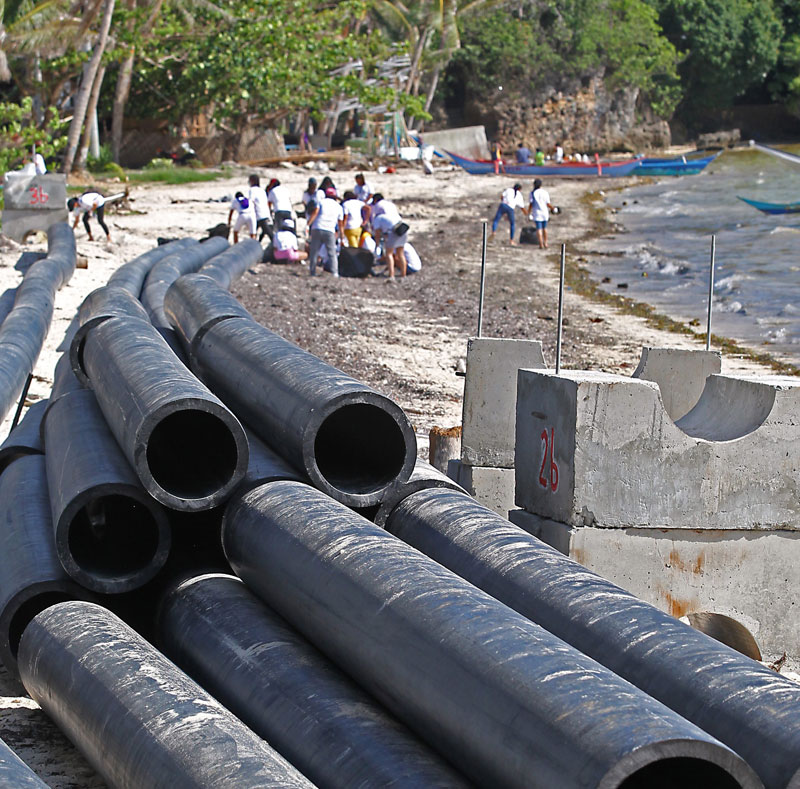
Photo shows sewer pipes that will replace old and substandard ones used by establishments on the island’s Bulabog beach. Walter Bollozos
The move is likely to affect the livelihoods of an estimated 30,000 people reliant on Boracay’s two million annual visitors, but many residents feel Duterte’s intervention was necessary.
“Local government officials have been so negligent. They don’t know how to manage and protect this island,” said a tour boat owner, Varril Santa, 51. “It would be better if the national government can run this island. It’s better for Boracay, it’s better for our tomorrow.”
A few remaining tourists posed for rare, crowd-free selfies in front of blue waters that have been for years cluttered with an armada of neon-sailed boats.
On Thursday, the boats were moved elsewhere, replaced by a coast guard ship lingering on the horizon and small navy boats policing a three-kilometer no-go zone. A day earlier, army helicopters ran regular sorties just meters above people playing in the sea.
A sewage system on the brink of collapse put Boracay on the government’s radar two months ago. Further inspection revealed a catalogue of environmental breaches across an island just 10-square-kilometers in size.
The interior department this week said it would seek charges against 10 unidentified local officials for negligence.
Tourism Secretary Wanda Teo urged the local authorities to put aside their grievances and work with the government.
On Thursday, volunteers cleared up seaweed, while diggers, trucks and heavy-duty machinery were moved in across the island, slowing the departure of the last trickle of tourists.
Workers in orange vests and hard hats dug up pipes and smashed down walls with sledge hammers, part of efforts to widen a slender spine road and demolish illegal buildings.
Teddy Macabeo, a Filipino-American who runs a small hotel and spends six months a year in Boracay, said he was shocked how quiet the beach was during his morning stroll.
“It’s the first time I’ve seen Boracay like this,” said Macabeo, 76, from Seattle. But, he said, “if we don’t take care of this now it will be totally destroyed.”
“The ocean, the overdevelopment, the waste – Boracay just can’t handle it.”
Several commercial establishments in Boracay have failed to connect to proper sewerage lines despite the government order for them to do so as early as February.
Environment Secretary Roy Cimatu had earlier ordered owners of resorts and restaurants to stop the illegal sewage lines that discharge directly to the sea.
The Department of Social Welfare and Development (DSWD) said that it will expand operations in Boracay as the number of people seeking assistance has increased.
From the single Operations Center located in Station 1, the DSWD said it could open up to two more satellite offices.
Based on surveys of the Department of Labor and Employment, there are some 36,000 workers in Boracay, 15,000 employed by the public sector.
Economic slowdown
The closure of Boracay Island is expected to have major effects on the economy of Western Visayas, authorities said.
Simulations conducted by the National Economic and Development Authority (NEDA) showed the six-month shutdown could decrease the country’s GDP or gross domestic product by .10 to.11 percent.
Ro-Ann Bacal, NEDA regional director, said the closure could slow down the region’s GRDP or gross regional domestic product by 5.07 to 5.23 percent.
“The effect in the national level is insignificant as tourists would just go to other places. Basically, it is the Region 6 that will be badly hurt by the closure,” Bacal said.
Boracay accounts for 30 percent of the country’s tourist arrivals. Record showed at least 5,600 tourists visit the island daily.
The closure will deprive the local government of P1.56 million in daily earnings from environmental and terminal fees alone, or around P46.678 million per month.
In 2017, Boracay tourism receipts stood at P56 billion.
The simulation assumed that the estimated decline in tourist arrivals in Boracay would increase tourism activities in other parts of Luzon, the Visayas and Mindanao.
In coming up with the analysis, the NEDA regional office noted that other popular destinations in the country could absorb 75 percent and 100 percent of domestic and international tourists, respectively.
The closure, although temporary, can also decrease the household income in Western Visayas by P14.291 billion to P14.767 billion.
Teo told a press conference on Wednesday that she ordered the Department of Tourism (DOT) foreign offices to continue promoting Boracay.
“We’ve been telling our tourism attachés that Boracay will be opened probably in less than six months. So we’re already promoting Boracay,” Teo said.
Sen. Sonny Angara urged the government to start promoting the country’s other tourist spots, particularly those in the poorer areas of the country, as an alternative destination.
Angara said Sorsogon, Leyte, Negros Oriental, Zamboanga, Catanduanes and Siquijor are among the poorest provinces that have some of the most beautiful beaches in the country.
Angara said the promotion of the other tourist destinations would help boost employment and alleviate poverty in these areas.
Meanwhile, Sen. Francis Pangilinan denounced the military and police exercise conducted in Boracay, which was supposedly meant to prepare for possible terrorist attacks or hostage taking incidents. – With Edu Punay, Cecille Suerte Felipe, Mayen Jaymalin, Rhodina Villanueva, Marvin Sy, Louise Maureen Simeon, Catherine Talavera, Rainier Allan Ronda, Eva Visperas, Jennifer Rendon, Reuters
Related video:
- Latest
- Trending

















